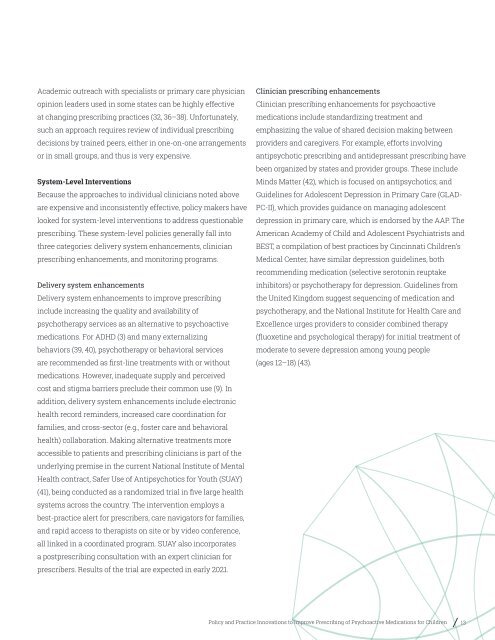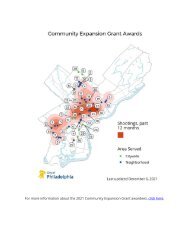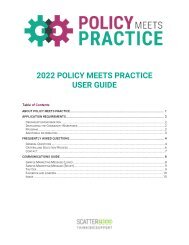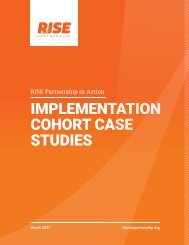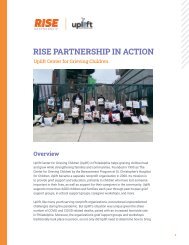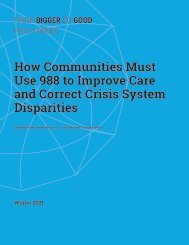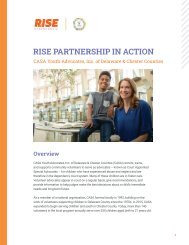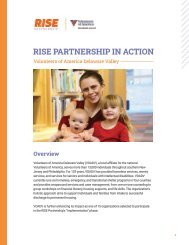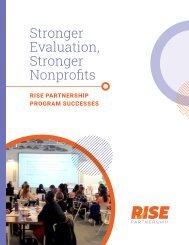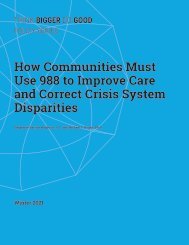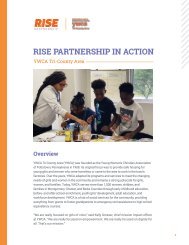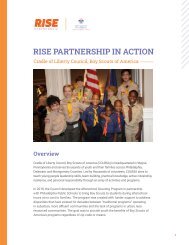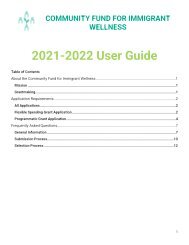Policy_and_Practice_Innovations_Childrens_Prescribing
You also want an ePaper? Increase the reach of your titles
YUMPU automatically turns print PDFs into web optimized ePapers that Google loves.
Academic outreach with specialists or primary care physician<br />
opinion leaders used in some states can be highly effective<br />
at changing prescribing practices (32, 36–38). Unfortunately,<br />
such an approach requires review of individual prescribing<br />
decisions by trained peers, either in one-on-one arrangements<br />
or in small groups, <strong>and</strong> thus is very expensive.<br />
System-Level Interventions<br />
Because the approaches to individual clinicians noted above<br />
are expensive <strong>and</strong> inconsistently effective, policy makers have<br />
looked for system-level interventions to address questionable<br />
prescribing. These system-level policies generally fall into<br />
three categories: delivery system enhancements, clinician<br />
prescribing enhancements, <strong>and</strong> monitoring programs.<br />
Delivery system enhancements<br />
Delivery system enhancements to improve prescribing<br />
include increasing the quality <strong>and</strong> availability of<br />
psychotherapy services as an alternative to psychoactive<br />
medications. For ADHD (3) <strong>and</strong> many externalizing<br />
behaviors (39, 40), psychotherapy or behavioral services<br />
are recommended as first-line treatments with or without<br />
medications. However, inadequate supply <strong>and</strong> perceived<br />
cost <strong>and</strong> stigma barriers preclude their common use (9). In<br />
addition, delivery system enhancements include electronic<br />
health record reminders, increased care coordination for<br />
families, <strong>and</strong> cross-sector (e.g., foster care <strong>and</strong> behavioral<br />
health) collaboration. Making alternative treatments more<br />
accessible to patients <strong>and</strong> prescribing clinicians is part of the<br />
underlying premise in the current National Institute of Mental<br />
Health contract, Safer Use of Antipsychotics for Youth (SUAY)<br />
(41), being conducted as a r<strong>and</strong>omized trial in five large health<br />
systems across the country. The intervention employs a<br />
best-practice alert for prescribers, care navigators for families,<br />
<strong>and</strong> rapid access to therapists on site or by video conference,<br />
all linked in a coordinated program. SUAY also incorporates<br />
a postprescribing consultation with an expert clinician for<br />
prescribers. Results of the trial are expected in early 2021.<br />
Clinician prescribing enhancements<br />
Clinician prescribing enhancements for psychoactive<br />
medications include st<strong>and</strong>ardizing treatment <strong>and</strong><br />
emphasizing the value of shared decision making between<br />
providers <strong>and</strong> caregivers. For example, efforts involving<br />
antipsychotic prescribing <strong>and</strong> antidepressant prescribing have<br />
been organized by states <strong>and</strong> provider groups. These include<br />
Minds Matter (42), which is focused on antipsychotics; <strong>and</strong><br />
Guidelines for Adolescent Depression in Primary Care (GLAD-<br />
PC-II), which provides guidance on managing adolescent<br />
depression in primary care, which is endorsed by the AAP. The<br />
American Academy of Child <strong>and</strong> Adolescent Psychiatrists <strong>and</strong><br />
BEST, a compilation of best practices by Cincinnati Children’s<br />
Medical Center, have similar depression guidelines, both<br />
recommending medication (selective serotonin reuptake<br />
inhibitors) or psychotherapy for depression. Guidelines from<br />
the United Kingdom suggest sequencing of medication <strong>and</strong><br />
psychotherapy, <strong>and</strong> the National Institute for Health Care <strong>and</strong><br />
Excellence urges providers to consider combined therapy<br />
(fluoxetine <strong>and</strong> psychological therapy) for initial treatment of<br />
moderate to severe depression among young people<br />
(ages 12–18) (43).<br />
<strong>Policy</strong> <strong>and</strong> <strong>Practice</strong> <strong>Innovations</strong> to Improve <strong>Prescribing</strong> of Psychoactive Medications for Children 13


